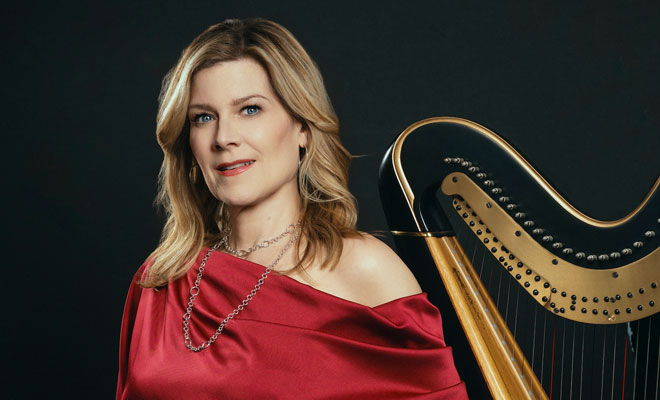
With “Ratnaraja,” internationally celebrated harpist and GRAMMY® nominee Kirsten Agresta Copely unveils a work of exquisite subtlety—one that reveals itself not in grand flourishes, but in the spaces between notes, in the tensile hush of breath and string.
Joined by the virtuosic clarinetist Ismail Lumanovski and delicately framed by producer Marc Copely’s attentive mix, Copely offers not merely a composition, but an atmosphere—an invocation of something ancient, meditative, and mercurial.
The second single from her forthcoming album ‘Kuruvinda,’ “Ratnaraja” is named with reverence: in Sanskrit, ratna suggests jewel, and raja, king. Indeed, there is a regal restraint here, a humility in the grandeur. The harp’s crystalline arpeggios unfold with meditative precision, beckoning the clarinet to emerge not as foil but as co-conspirator.
Lumanovski answers with phrasing that feels elemental—his tone oscillating between the sorrowful and the sublime, as if articulating an interior monologue too fine for words.
Copely is no stranger to the intersection of technical rigor and emotive transparency. Her harp has long been a vessel for the unsayable—from her previous album ‘Aquamarine,’ a graceful elegy written in mourning, to this latest body of work that dares to explore the jagged luminosity of imperfection.

‘Kuruvinda’—named for the so-called “imperfect ruby”—positions itself as a meditation on broken beauty. If ‘Aquamarine’ drifted like a balm across still waters, “Ratnaraja” peers into the depths, asking what it means to shimmer in shadow.
What sets “Ratnaraja” apart is its refusal to be easily classified. It floats between genres—New Age, chamber Jazz, Ambient classical—without ever anchoring to one. Its minimalism recalls the emotional clarity of Ólafur Arnalds or the spatial expansiveness of Ludovico Einaudi, while its cultural fluidity—particularly in Lumanovski’s Eastern-tinged clarinet lines—evokes Anoushka Shankar’s syncretic aesthetic. Yet Copely’s compositional voice is distinct: poised, unhurried, and steeped in a deep listening that extends beyond the sonic.
There is a therapeutic quality to “Ratnaraja,” not in the diluted sense of background wellness music, but in its ability to hold emotional multiplicities: grief and grace, disquiet and serenity. It invites repeated listening not for catharsis, but for communion.
Copely’s artistry is grounded in a rare combination of breadth and depth. From the White House with Beyoncé to the orchestral pits of Lincoln Center, from Pop collaborations to contemplative solo works, she has proven herself fluent in the language of both spectacle and introspection. With “Ratnaraja,” she chooses the latter—not as retreat, but as offering.
In an age clamoring for attention, “Ratnaraja” whispers—and in doing so, commands a more sacred kind. It is a jewel in the truest sense: not flawless, but radiant in its complexity.
CONNECT WITH KIRSTEN AGRESTA COPELY
YouTube | Facebook | Instagram
References
Present PR. (2025). Kirsten Agresta Copely’s “Ratnaraja” Radiates Mystery and Mastery in a New Age Duet of Rare Intimacy. Retrieved from [Email communication].
Hi, I’m Erick Ycaza — a music blogger with a BA in Advertising & Graphic Design. I created this blog to keep you updated with daily music news. Surprisingly, I’ve been writing about music since 2007. If you’re an artist and would like to be featured, feel free to reach out: info@electrowow.net







